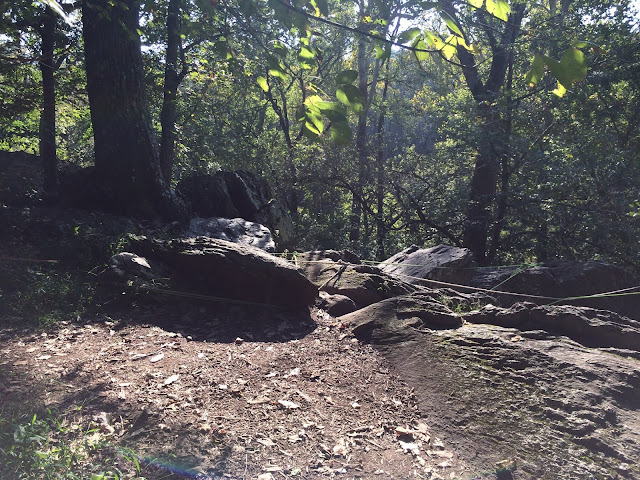 |
| Words fail. |
 |
| The massive tree is OK, really, you don't need the tiny cams. |
 |
| The runner and carabiner add complexity. Running the rope around both trees would be simpler. |
 |
| Gate down means it could be forced open if that collar isn't REALLY locked. |
 |
| Ignoring the enormous tree and using the loose rock. |
 |
| Two anchors aren't great when they go to the same tree perched on roots out of the ground. |
 |
| Using the big tree is better than the previous photo, but they came up short, and still use the loose block. |
 |
| The white rope goes around both blocks. The green ropes go to one block each. The blocks have never moved when both are used together. The blocks have moved when used singly. |
 |
| Of all the anchors, he went with this skinny tree, but.. |
 |
| he had this big loose block too. |
 |
| A REALLY dead tree is not a good anchor. |
 |
| Two anchors on one tree is not redundant. I guess he thought being able to see all the roots was a good thing. |
 |
| Why use the enormous tree when you can use the loose rock. |
 |
| He had lots of rope to sling the whole block but went with a tiny corner. |
 |
| You could come up a little short and you're going to let the carabiners grind and side load because it's a bitch to retie all those runners. |
 |
| This is canyoneering rope, which is not really static. The bowline with no stopper knot goes to a bent gate carabiner (easier opening). Bonus points for the stopper doing nothing. |
 |
| A clove hitch is OK for a belay when it is right in front of your face, not 40 feet away and out of sight. |
 |
| When you use 9/16" webbing and 8 MM cord, I guess you want the anchor high to stay off the rock. |
 |
| You can't side load the carabiners unless you have two anchors. |
 |
| Nobody used the enormous tree, but made a spider's web from its roots. |
 |
| Think about a way to go under somebody's ropes. |
 |
| Gear isn't good for anchors because the rock breaks. The carabiner gates are facing into the rock so they can be forced open. |